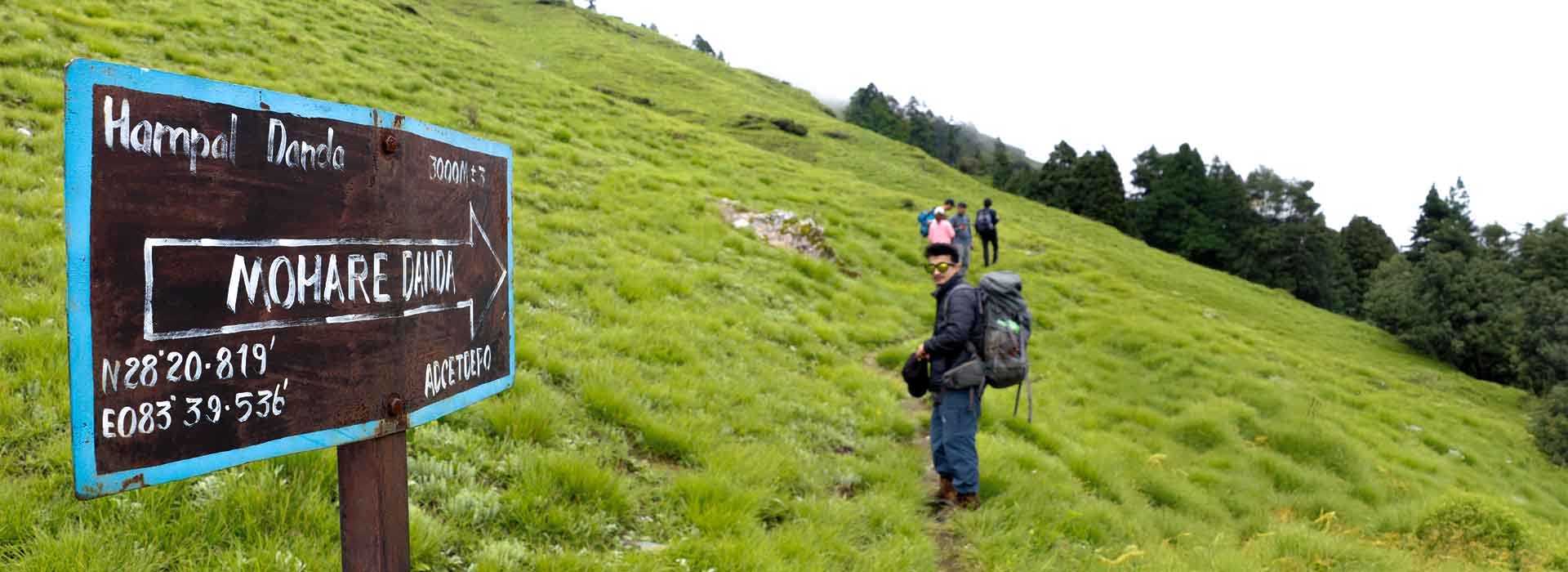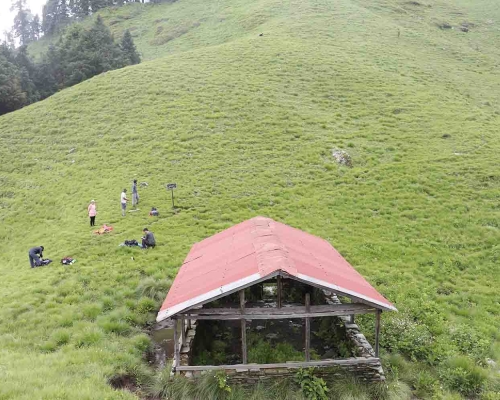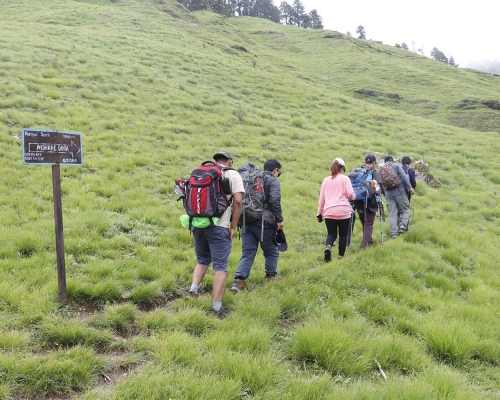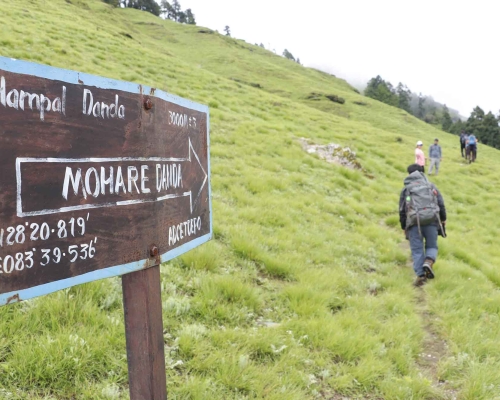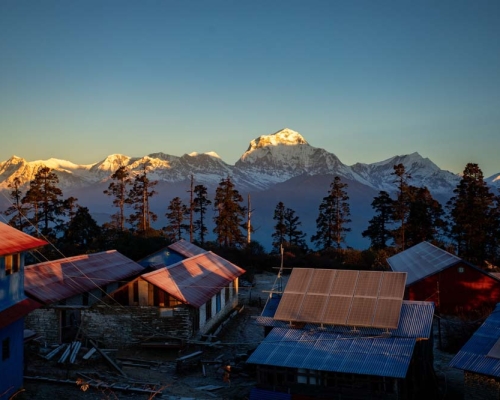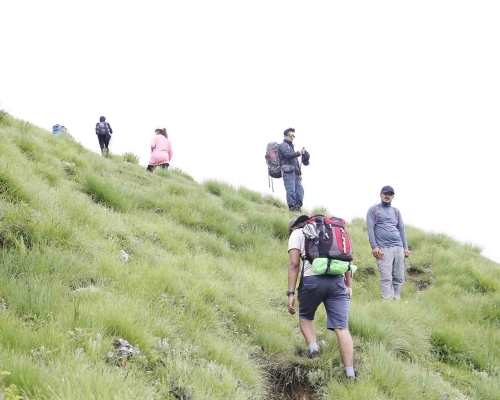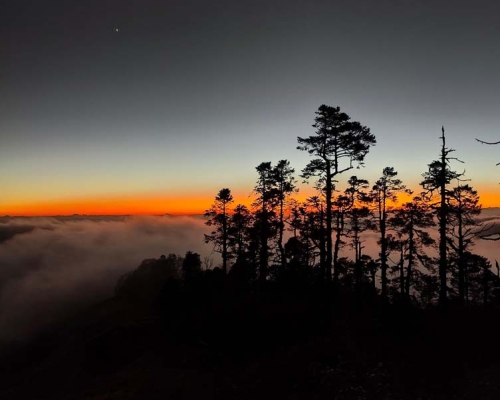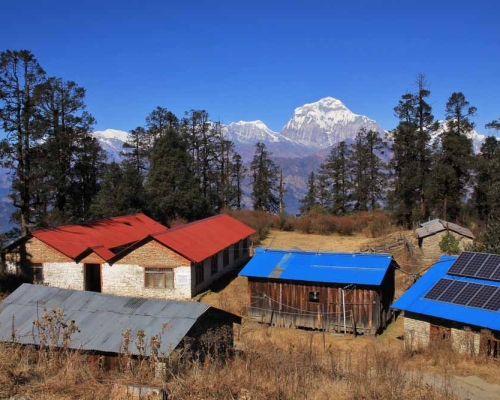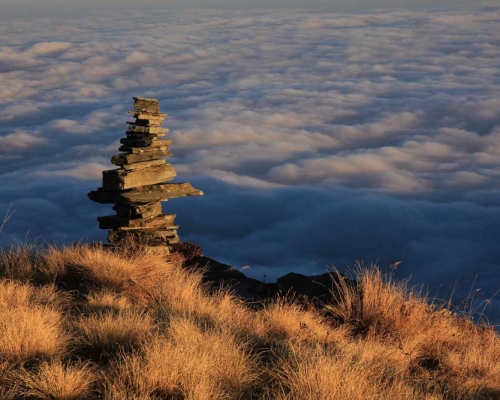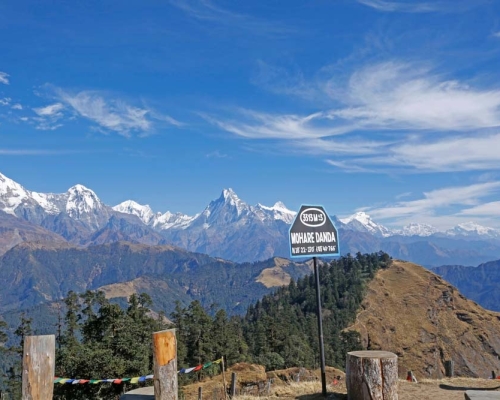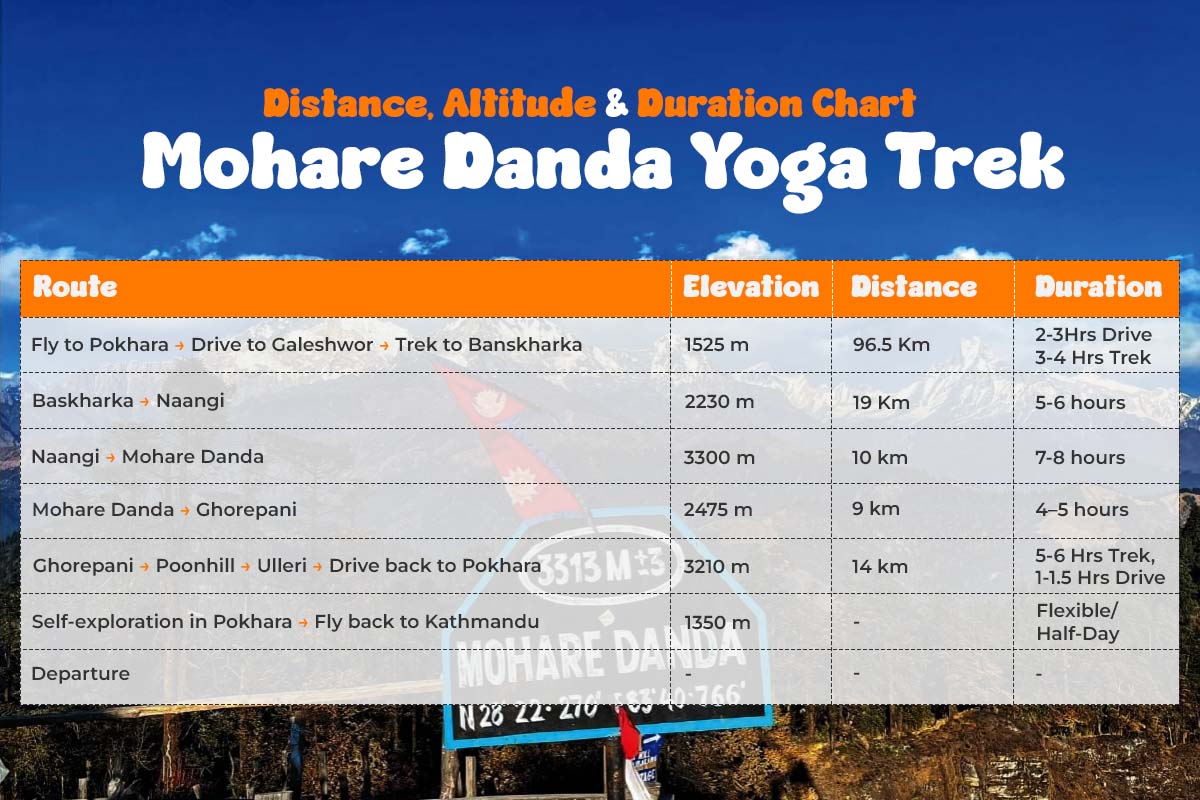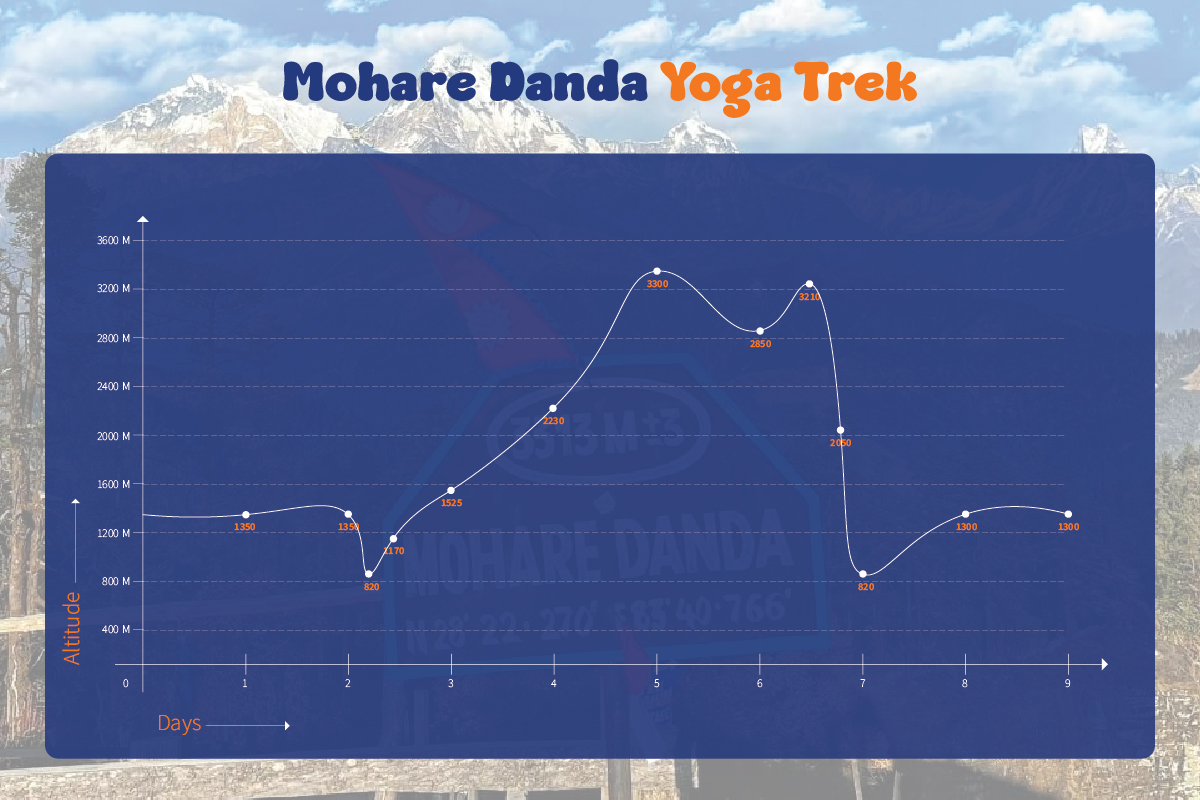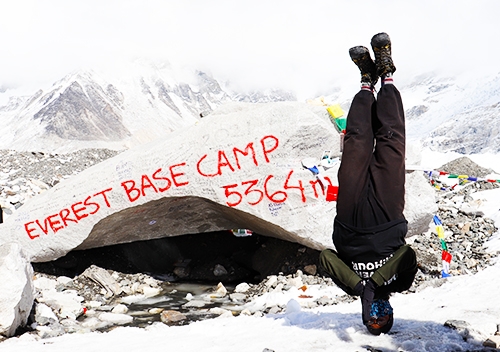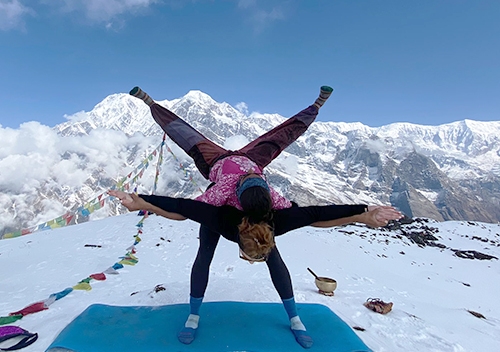Overview of Mohare Danda Yoga Trek
The Mohare Danda Yoga Trek is a peaceful 9-day trekking and meditation experience in the Annapurna region of Nepal. It offers a quiet and less crowded alternative to the Ghorepani Poon Hill Trek, combining gentle trekking with daily yoga and mindfulness practices. Also known as the Mohare Danda Community Lodge Trek, this route leads you through traditional Magar and Gurung villages, rhododendron forests, and scenic hilltops with panoramic views of the Annapurna and Dhaulagiri mountain ranges.
This yoga trek strongly promotes sustainable and community-based tourism. Trekkers stay in community-run eco lodges where meals are prepared with fresh, local ingredients, and income directly supports education, health programs, and village development. The route was established in 2010 by Mahabir Pun as part of the “Community Eco Lodge Trek” initiative, designed to create economic opportunities in remote areas while preserving local culture and nature.
A key highlight of the Mohare Danda Yoga Trek is the daily wellness routine. You will be guided by an experienced yoga instructor who leads morning sessions of gentle asanas, breathing practices, and guided meditation before breakfast. Evening sessions help you stretch, relax, and ease your body after the day’s walk. Along the trail, your guide can pause the trek for short yoga or meditation breaks to support acclimatization and reduce fatigue. You can also request additional practices such as sound healing, mantra chanting, mindfulness, and spiritual chants to enhance your experience. These sessions help calm the mind, strengthen the body, and create a mindful flow throughout the trek.
The trekking route begins with a cultural tour in Kathmandu before flying to Pokhara and driving to Galeshwor. From there, the trail leads you through orange-growing villages like Banskharka and the community-focused village of Naangi. The climb to Mohare Danda (3,300 m), the highest point of the trek, takes you through beautiful rhododendron forests. From the top, you can enjoy breathtaking sunrise and sunset views of the Himalayas making it an ideal setting for yoga and meditation. After Mohare Danda, the trail descends to Ghorepani and continues to the famous Poon Hill viewpoint for another stunning sunrise before returning to Pokhara.
The Mohare Danda Yoga Trek combines trekking, cultural experience, yoga, meditation, and sustainable tourism into one holistic journey. It avoids busy trails and offers a calm setting for beginners, families, and older hikers. Many trekkers complete this wellness journey feeling balanced and renewed through daily yoga sessions, guided meditation, mindful walking, and breathwork in nature. The package includes community lodge accommodation, meals, all permits, private transport, and a certified yoga and trekking guide. For 2025/2026, this trek is a strong option for anyone seeking a meaningful yoga trekking experience or a mountain-based yoga retreat with a focus on mindfulness and community support.
Highlights of Mohare Danda Yoga Trek
- Scenic drive from Pokhara to Galeshwor, cross the Kali Gandaki River suspension bridge, and visit orange orchards and Magar villages
- Daily yoga and meditation practice in peaceful mountain settings, including mindful breathing, gentle asanas, and guided meditation to refresh your body and mind throughout the trek
- Experience the community-owned and operated lodges used to support local development and sustainable tourism
- Engage in authentic cultural experiences in Gurung and Magar villages such as Galeshwor, Banskharka, and Naangi
- Stunning views of the sunrise and sunset over the Annapurna and Dhaulagiri ranges from Mohare Danda, which is a quieter alternative to Poon Hill
- Visit Ghorepani, a classic Himalayan village surrounded by rhododendron forests
- Explore Ghandruk village, a Gurung historic village where you can engage with cultural programs, visit a Gurung Cultural Museum, and admire the Himalayan peaks in the background
- Hike through beautiful ridgelines, alpine meadows and terraced farmland with expansive views of the mountains
- Enjoy organic produce and traditional Magar and Gurung cuisine
- Uncrowded, peaceful hiking trails are ideal for exploring a calm and beautiful natural landscape
Major Highlights of Mohare Danda Yoga Trek
Mohare Danda
Mohare Danda is the highest point of the Mohare Danda Trek at 3,300 meters, located on a ridge between the Annapurna and Dhaulagiri mountain ranges. Trekkers reach this point after hiking through rhododendron forests and remote villages. Once you reach the top of Mohare Danda, you will have a wide, clear sight of the prominent Himalayan peaks like Dhaulagiri (8,167 m), Annapurna South (7,219 m), Nilgiri, Hiunchuli, Gangapurna, and Machhapuchhre (Fishtail). It is a popular viewpoint in Nepal to watch sunrise and sunset over these peaks.
The Mohare Danda trekking route was developed as a community-based eco tourism project in which all of the trek's overnight lodgings are at community-run lodges; therefore, the benefits of tourism remain within the community. Each of the lodges utilizes solar energy and serves food that has been sourced locally, mitigating their environmental impact. Waste management and low-impact practices have been adopted along the entire Mohare Danda trek route.
This route eases pressure on the very popular Ghorepani Poon Hill trek and promotes environmental sustainability and a better lifestyle for home stay operators from the local community in Nepal. The Mohare Danda trek is an excellent example of a sustainable trekking route in Nepal.
Ghandruk Village
Ghandruk is a typical Gurung village located at an altitude of about 1,940 meters in the Annapurna region of Nepal. Ghandruk is one of the largest, most famous, and frequently trekked villages in the area. The village is located on terraced hills and has stone-paved roads, slate-roofed houses, and well-arranged courtyards. Ghandruk has retained its Gurung culture and customs. Tourists commonly visit the Gurung Cultural Museum, which displays traditional tools of the trade, clothes, and household items.
Ghandruk is a great place for views of the Himalayan ranges, especially Annapurna South, Hiunchuli, and Machhapuchhre (Fishtail). On clear days, these mountains will be most visible in the early mornings or early evenings. In addition to the stunning mountain landscapes, the surrounding landscape of terraced fields, forests, and hills makes Ghandruk an attractive place to visit, with a rich cultural heritage. Ghandruk is also a popular stopping point for trekkers, as it is part of many routes in the Annapurna region.
Yoga and Meditation Sessions
Early each morning before breakfast, there will be a yoga session to awaken the body and center the mind. In the evening, a session may be held before dinner, time permitting, to help you relax and reflect on the day. On longer trekking days, the yoga guide can lead short mindfulness breaks along the trail, helping you reconnect with your breath, surroundings, and inner calm. You can also request practices such as mantra chanting, singing bowls, guided meditation, or other mindfulness exercises to deepen focus, enhance relaxation, and create a sense of balance throughout the trek.
When Is the Best Time to Do the Mohare Danda Yoga Trek?
The Mohare Danda Yoga Trek can be done throughout the year because it lies in the lower Annapurna region. The trek is at its best during the spring season from March to May, when the forest is full of blooming rhododendrons and the pleasant weather makes an ideal setting for outdoor yoga and peaceful meditation sessions.
The Autumn season, from September to November, is also an excellent time for the trek. During the autumn, the skies are clear, and you can appreciate the stunning views of the Himalayas. If you like a peaceful trail and calm surroundings, the winter season (December to February) is also equally perfect for you. Practicing yoga in fresh mountain air can be incredibly reviving. The monsoon season (June to August) is best avoided, as trails can be muddy and slippery, making trekking and outdoor yoga sessions impossible.
How Difficult is The Mohare Danda Yoga Trekking and How Can I Prepare Myself for the Trek?
The Mohare Danda Yoga Trek is a moderate trek suitable for beginners with basic fitness levels. The route ranges from 800 to 3,300 meters in altitude and involves about 5 to 6 hours of walking each day through peaceful villages and beautiful forests. No technical climbing skills are required, though some uphill and downhill sections may feel challenging.
To prepare, focus on cardio exercises such as walking, jogging, cycling, or stair climbing for a few weeks before the trek. Light strength training for your legs and core will improve endurance and stability. Practising short hikes with a backpack can also help your body adjust to carrying light gear.
Pack suitable clothing and equipment, including comfortable hiking boots, layered outfits, and rain protection. A calm and open mindset is just as important as physical fitness. Practising yoga and breathing exercises before and during the trek will help you stay balanced, focused, and mindful throughout the journey.
Who Can do the Mohare Danda Yoga Trek?
The Mohare Danda Yoga Trek is a great option for hikers looking for a beautiful, short trek that offers stunning Himalayan views, a cultural experience, and mindfulness. It is suitable for beginners or anyone wanting a moderate trek with elevation without extreme altitude. The trek starts from around 800 meters and ascends to about 3,300 meters, which means it is suitable for most people able to walk with basic fitness.
This trek is also perfect for travellers who care about sustainable and responsible tourism in Nepal. This is a community-based trek in the Annapurna region, which encourages local development through community-run lodges and homestays. They have ensured that the benefits from tourism stick in the region. By choosing this trek, you are directly linked with local livelihoods, education, and conservation, which will provide a meaningful and mindful travelling experience connecting back to nature and the culture of the area.
Why Choose Footprint Adventure for the Mohare Danda Trek in 2025/2026?
Footprint Adventure takes great pride in offering the Mohare Danda Yoga Trek, which is a sustainable, community-focused, and wellness trek in the Annapurna region. This trek is a wonderful blend of the beauty of the Himalayas and the serenity of yoga and meditation practices, making it a harmonious experience for the body, mind, and spirit.
We work hand-in-hand with local communities to promote eco-conscious tourism that contributes directly to village economies. The itineraries we create are carefully structured to minimise environmental impacts by avoiding plastic, utilising community-run lodges and homestays, and promoting responsible trekking. Further, we offer clean-up treks and tree planting campaigns to safeguard the natural environment and promote harmony with the natural world, which lies at the heart of mindful travel practices.
All of our guides are trained in responsible tourism and yoga-friendly trekking. This means that each day is planned for you to engage in some sort of reflection, meditation, and/or connecting with nature as part of the journey. By travelling with us, you will be hiking accessible trails and practising yoga in the lofty, majestic Himalayas, but also directly affecting the local economy, schools, and conservation efforts.

